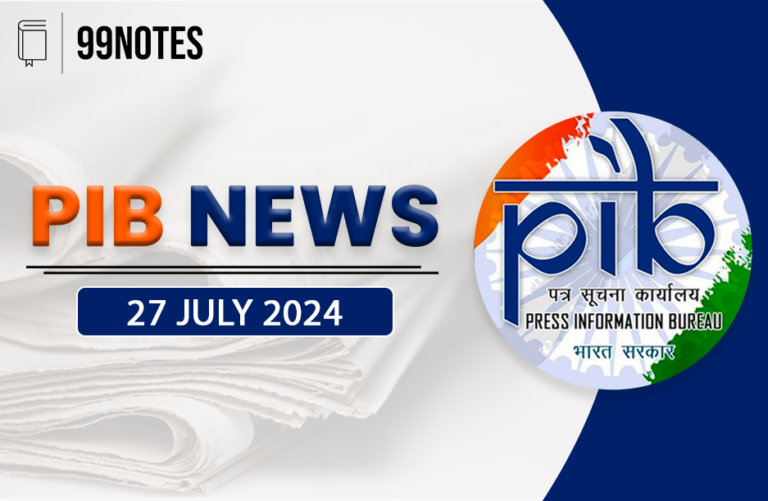7 October 2024 : Indian Express Editorial Analysis
1. Stories Of Health And Hope
(Source: Indian Express; Section: The Editorial Page; Page: 10)
| Topic: GS2- Governance |
| Context: |
|
About PM Jan Arogya Scheme (PMJAY)
- The Pradhan Mantri Jan Arogya Yojana (PM-JAY), also known as Ayushman Bharat, provides health coverage of up to ₹5 lakhs per family per year for secondary and tertiary care hospitalization.
- The scheme targets economically vulnerable families, covering over 10.74 crore families based on the Socio-Economic Caste Census (SECC)
- Beneficiaries receive cashless and paperless treatment at empaneled public and private hospitals across India, making healthcare services more accessible.
- The scheme offers portability, allowing beneficiaries to access healthcare services across India, and covers a broad spectrum of health conditions, ensuring wider inclusion.
Overview of PMJAY
- PMJAY has facilitated approximately 7.8 crore hospital admissions over six years, showcasing its impact on universal health coverage (UHC).
- The scheme offers up to Rs 5 lakh for secondary and tertiary treatment, which is critical for many families despite being lower than private insurance offerings.
- PMJAY is a key part of the government’s broader strategy to reduce healthcare inequality and improve access for marginalized communities.
Structure and Coverage
- PMJAY focuses on inpatient care, with outpatient services being managed through a separate comprehensive primary healthcare initiative.
- Over 1,75,000 Ayushman Arogya Mandirs have been established to provide free consultations and essential medications.
- The dual approach of inpatient and outpatient care aims to create a more holistic healthcare system, addressing both immediate and preventive healthcare needs.
Policy Adjustments and Flexibility
- The Health Benefit Package (HBP) has been expanded from 1,393 to 1,949 procedures, reflecting ongoing improvements in service offerings.
- The introduction of differential pricing allows for customization based on regional healthcare costs, enhancing accessibility.
- Continuous stakeholder engagement has facilitated the refinement of the HBP, ensuring that it meets the evolving healthcare demands of diverse populations.
Technological Integration
- PMJAY is designed to be technology-driven and cashless, minimizing the risk of abuse and ensuring efficient claim settlements.
- Continuous efforts are in place to improve the claims process and partnership with states.
- The digital infrastructure enables real-time tracking of claims and services, promoting transparency and accountability.
Recent Initiatives
- The government has expanded PMJAY coverage to include ASHA and Anganwadi workers and all citizens aged 70 and above, benefiting millions.
- The decision to include senior citizens recognizes the unique healthcare challenges they face.
- These initiatives reflect a growing recognition of the need for targeted health interventions for vulnerable groups within society.
Demographics and Impact
- The elderly population in India is particularly vulnerable, with high rates of chronic disease and disability.
- PMJAY’s lack of exclusions for pre-existing conditions makes it an inclusive option compared to private insurance.
- The focus on women within the elderly demographic, especially widows, highlights an essential aspect of social equity in health coverage.
Integration of Public and Private Sectors
- PMJAY connects over 29,000 empanelled hospitals, with a significant share in the private sector, indicating robust collaboration.
- Enhanced funding from PMJAY is improving public hospital services and infrastructure.
- This integration has the potential to create a balanced ecosystem where both public and private sectors complement each other, leading to improved healthcare delivery.
Economic Implications
- A recent study indicates that PMJAY has reduced the vulnerability of the bottom 50% of the population to medical expenses, showcasing its economic impact.
- By alleviating financial burdens related to healthcare, PMJAY contributes to increased household savings and economic stability.
- The scheme’s positive economic implications are essential for fostering a more resilient economy that can withstand healthcare-related shocks.
Conclusion
- PMJAY is positioned as a crucial element in India’s healthcare landscape, contributing to the vision of a Viksit Bharat (developed India).
- By focusing on health as a foundation for well-being and productivity, the scheme plays a pivotal role in fostering national prosperity.
- Continued investment and refinement of PMJAY will be vital in achieving sustainable health outcomes and further reducing inequalities in healthcare access.
| Impact and Challenges of the PMJAY Scheme |
|
Widened Access to Healthcare: Financial Protection: PMJAY has provided critical financial coverage of up to ₹5 lakhs per family per year, preventing catastrophic healthcare costs for millions of families and significantly reducing the out of pocket medical expenses. Recent expansions have included senior citizens above 70 and ASHA/Anganwadi workers, ensuring broader coverage for vulnerable populations. Widened Access to Healthcare: With over 29,000 empaneled hospitals, the scheme has improved access to healthcare services, especially in Tier-2 and Tier-3 cities, benefiting approximately 7.8 crore patients over the last six years. Limited Coverage for Outpatient Services: PMJAY currently focuses on inpatient secondary and tertiary care, excluding outpatient services, which limits its comprehensive impact on healthcare needs. Awareness and Utilization Gaps: Many eligible families are unaware of their entitlements under the scheme, leading to underutilization. As seen in the case of Raju, beneficiaries may overlook their eligibility or fail to understand the scheme’s benefits. |
| PYQ: Appropriate local community-level healthcare intervention is a prerequisite to achieve ‘Health for All ‘ in India. Explain. (150 words/10m) (UPSC CSE (M) GS-2 2018) |

